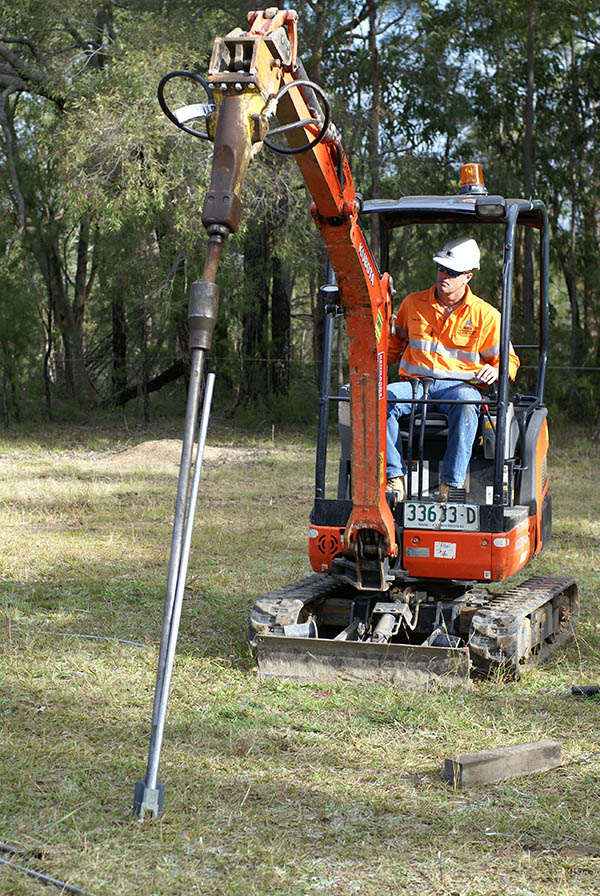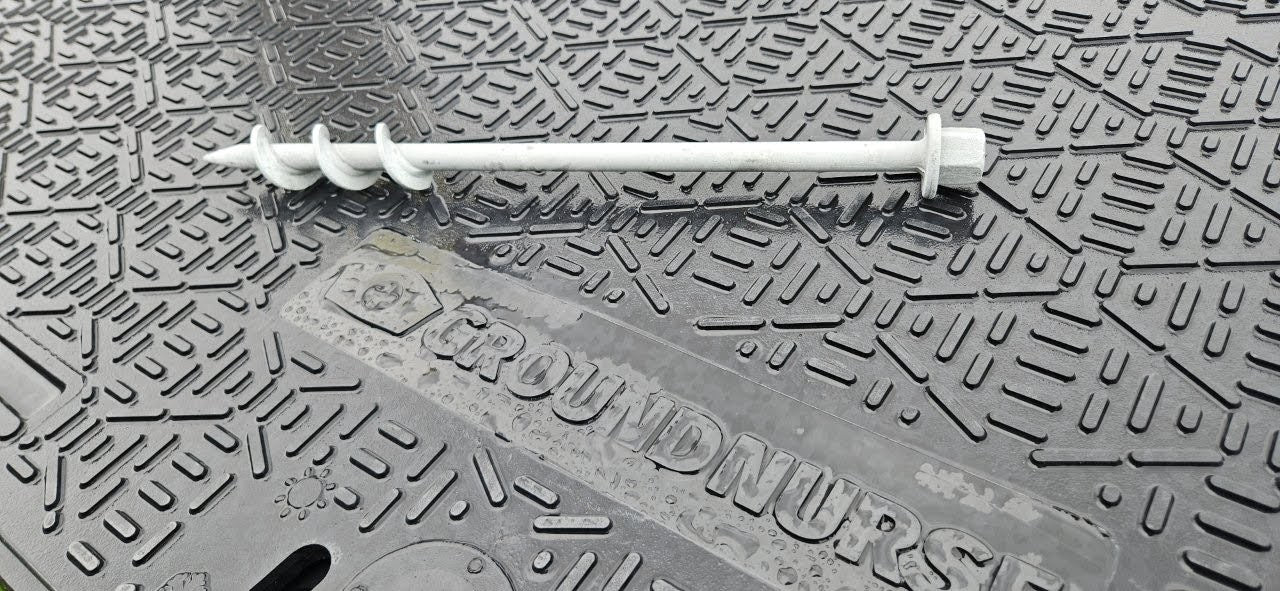The Role of Manta Ray anchors to Secure Structures
Wiki Article
Exactly How Sturdy Earth Anchors Work: A Comprehensive Guide to Soil Anchoring Solutions
Sturdy Earth anchors play an important duty in supplying stability and assistance in various construction applications. By installing deeply right into the ground, they withstand lateral and upright forces properly. Different kinds of anchors accommodate various dirt conditions, making them flexible. Recognizing their auto mechanics and installation techniques is crucial for taking full advantage of efficiency. What aspects affect their efficiency, and exactly how do they contrast to standard approaches? The answers may amaze you.Recognizing Durable Earth Anchors
Sturdy Earth supports work as essential parts in various construction and landscape design jobs, providing stability and assistance in tough soil problems. These supports operate by being installed right into the ground, where they withstand vertical and lateral forces. Their style permits secure attachment to frameworks, ensuring they continue to be secured against dirt movement or outside loads.The effectiveness of heavy-duty Earth supports largely relies on the sort of soil and the anchor's installation depth. Proper setup strategies are vital, as they establish the anchor's holding capability. Environmental aspects, such as moisture and freeze-thaw cycles, can additionally impact performance.These supports are often utilized in applications varying from securing fences and maintaining walls to supporting temporary structures throughout unfavorable climate condition. Recognizing the principles behind durable Earth anchors is crucial for specialists looking for to improve the toughness and safety and security of their jobs.Kinds Of Heavy-Duty Earth Anchors
Numerous kinds of sturdy Earth supports are developed to fulfill details demands based on dirt problems and task requirements. Helical supports, featuring screw-like blades, are reliable in softer dirts, offering high lots abilities and very easy installment. Driven supports, which are hammered right into the ground, are ideal for rocky surfaces and offer instant tons assistance. Tie-back anchors are commonly used in preserving wall surface applications, allowing for lateral support by securing into the ground at an angle. Another type is the cast-in-place anchor, suitable for concrete applications, as they are integrated right into structures for boosted security. Soil screw supports are functional choices that can be utilized in various soil types, offering dependable tension and compression capabilities. Each kind offers distinctive applications, guaranteeing security and safety in building and landscaping projects. Comprehending these choices enables notified decisions in choosing the proper Earth anchoring option.The Mechanics of Dirt Anchoring

Comprehending the mechanics of dirt anchoring calls for an assessment of various kinds of Earth supports and their installation techniques. Each anchor kind offers one-of-a-kind features that affect its effectiveness in different dirt conditions. Proper installation approaches are essential for taking full advantage of the securing system's stability and performance.
Sorts Of Earth Anchors
Earth anchors, necessary components in dirt anchoring systems, can be found in several types, each developed for particular applications and dirt conditions. The most common types include screw anchors, which are turned right into the ground, giving strong side resistance. Helical supports include blades that enable efficient installment in numerous dirt kinds, making them ideal for both short-lived and irreversible applications. Driven anchors, typically made from steel, are inculcated the dirt and are efficient in dense or rocky atmospheres. Auger anchors make use of a helical design to facilitate installation in softer dirts. Plate anchors are composed of a flat plate buried flat, dispersing tons over a larger area, perfect for applications calling for high load capacities in cohesive soils.Setup Methods Discussed
Appropriate installation strategies are important for the performance of soil anchoring systems. The procedure typically starts with website assessment, confirming the selected location can support the support's lots. After establishing the proper support kind, correct hole depth and angle need to be established. The installation involves driving the support into the ground using specific equipment, such as manual or hydraulic drivers, to accomplish ideal embedment. Post-installation, tensioning the support is critical to assure stability; this is often confirmed with lots testing. In addition, bordering soil problems ought to be kept track of to avoid displacement. Complying with these techniques not only boosts the anchor's performance however additionally prolongs its life expectancy, giving trustworthy support for various applications.Applications of Heavy-Duty Earth Anchors
While sturdy Earth supports are typically linked with building and landscaping, their convenience reaches a range of applications throughout various industries. In civil engineering, they offer important assistance for maintaining walls, making sure stability in areas prone to soil erosion. The aquatic sector utilizes these anchors for securing anchors and marinas, stopping movement created by currents and trends. Additionally, in the telecom industry, durable Earth anchors are significant for maintaining cell towers and other tall frameworks versus wind forces. Agricultural applications likewise profit, as these supports can safeguard structures like greenhouses and animals fencing, guaranteeing they endure extreme weather. Moreover, in renewable resource jobs, such as wind ranches, Earth supports play an important duty in safeguarding turbine structures, improving overall security and performance. This wide variety of applications highlights the adaptability and integrity of sturdy Earth supports throughout different areas.Advantages Over Typical Anchoring Approaches
Although standard anchoring methods have actually long been counted upon for security, durable Earth anchors supply significant advantages that boost efficiency and effectiveness. One significant benefit is their exceptional load-bearing ability, which enables them to endure greater forces without failing. This stamina makes them perfect for requiring applications, such as in construction and utility installations.Additionally, durable Earth supports are created for deeper setup, providing greater stability in various dirt problems, consisting of loose or sandy dirts. Their resistance to corrosion and environmental aspects guarantees a much longer life-span and reduced upkeep costs compared to conventional methods.Moreover, these supports can be installed with minimal disruption to the surrounding location, preserving the stability of the landscape. On the whole, sturdy Earth anchors offer a dependable and blog here efficient solution for anchoring requirements, exceeding the constraints commonly connected with traditional anchoring strategies.Installation Process and Finest Practices
The installation procedure for dirt anchoring services starts with complete preparation and website analysis to ensure peak efficiency. Following this, a detailed installation overview gives clear directions for effective application (construction site anchors). Abiding by these finest practices is crucial for attaining reputable and resilient anchoring outcomesPrep Work and Site Assessment
Efficient preparation and comprehensive site analysis are important action in the installation of dirt anchoring services. Before installment, the dirt type have to be assessed to establish its bearing ability and viability for anchoring. Performing a geotechnical survey can provide important info about dirt structure, dampness levels, and potential ground movement. Additionally, identifying existing structures, vegetation, and utilities is necessary to avoid interference throughout installment. The location needs to be cleared of particles and obstacles to ensure safe accessibility for equipment. Weather ought to likewise be checked, as damaging conditions can influence both security and installation effectiveness. By meticulously preparing the site and assessing all pertinent factors, the probability of effective support efficiency is considerably raised.Step-by-Step Installation Overview
A detailed installation process is important for achieving suitable performance of soil securing solutions. The setup begins with choosing the proper anchor type and guaranteeing the site is clear of debris. Next off, proper hole placement is figured out based upon tons demands. As soon as the place is established, holes are drilled to the defined deepness and size using the right devices. The anchor is after that inserted right into the opening, making certain it is aligned correctly. After safeguarding the support, soil is backfilled and compressed to boost security. It is necessary to comply with producer guidelines throughout the process. A post-installation inspection confirms that the anchors are sufficiently located and functioning as intended, giving trusted assistance for the designated application.
Maintenance and Inspection of Earth Anchors
Normal upkeep and evaluation of Earth supports are vital for ensuring long-lasting performance and security. Regular checks permit the very early detection of concerns such as deterioration, loosening, or soil activity. Examiners must try to find indications of corrosion or destruction on the support elements, particularly at the link factors. Additionally, the bordering dirt should be assessed for erosion or changes in dampness web content, which can influence support effectiveness.It is suggested to establish a regular assessment read this post here timetable, ideally at the very least yearly, depending upon environmental conditions. During assessments, all visible components need to be cleaned up to eliminate dirt or particles that can conceal possible issues. Any kind of indications of distress, such as tilting frameworks or unusual settling, must prompt immediate assessment. Correct documentation of evaluations can aid in tracking anchor efficiency in time and assist in timely upkeep actions, guaranteeing the anchors remain trusted and useful.Often Asked Inquiries
What Materials Are Heavy-Duty Earth Anchors Typically Made From?
Sturdy Earth anchors are typically created from resilient products such as galvanized steel or stainless steel, guaranteeing toughness and resistance to corrosion. These materials supply resilient support and stability in numerous soil conditions and applications.How Do Dirt Problems Influence Support Performance?
Soil conditions substantially affect anchor performance. Elements such as soil kind, moisture content, and compaction influence the anchor's grip and security, with natural dirts typically supplying much better resistance than sandy or loose dirts, influencing overall efficiency.
Can Heavy-Duty Earth Anchors Be Reused After Removal?
Durable Earth anchors can be recycled after elimination, offered they are checked for damages and wear. Proper cleansing and maintenance boost their longevity, ensuring efficient efficiency in succeeding installments when problems permit safe reinstallation.What Are the Ecological Influences of Utilizing Earth Anchors?
The environmental influences of making use of Earth anchors consist of prospective soil disturbance, interruption of regional environments, and possible contamination of groundwater. If utilized responsibly, their advantages often surpass these worries, advertising stability in various applications.Exactly how Do I Choose the Right Support for My Job?

Report this wiki page